Azomac | Powder for Suspension | 50 ml | 1 pcs
৳ 185.55
Brand Name: Azomac Powder for Suspension
Generic: Azithromycin Dihydrate
200 mg/5 ml
Manufacturer: General Pharmaceuticals Ltd.
20 ml bottle: ৳ 100.30
35 ml bottle: ৳ 140.43
50 ml bottle: ৳ 185.55
Indications
Pharmacology
Azithromycin is acid-stable and can therefore be taken orally with no need of protection from gastric acids. It is readily absorbed; its absorption is greater on an empty stomach. Time to peak concentration in adults is 2.1 to 3.2 hours for oral dosage forms. Due to the high concentration in phagocytes, azithromycin is actively transported to the site of infection. During active phagocytosis, large concentrations of azithromycin are released. The concentration of azithromycin in the tissues can be over 50 times higher than in plasma. This is due to ion trapping and the high lipid solubility.
Azithromycin’s half-life allows a large single dose to be administered and yet maintain bacteriostatic levels in the infected tissue for several days. Following a single 500 mg dose, plasma concentrations of azithromycin declined in a polyphasic pattern with a mean apparent plasma clearance of 630 mL/min and a terminal elimination half life of 68 hours. The prolonged terminal half-life is thought to be due to extensive uptake and subsequent release of drug from tissues. Biliary excretion of azithromycin, predominantly unchanged, is a major route of elimination. Over the course of a week, approximately 6% of the administered dose appears as unchanged drug in urine.
Microbiology: Azithromycin acts by binding to the 50S ribosomal subunit of susceptible microorganisms and, thus, interfering with microbial protein synthesis. Nucleic acid synthesis is not affected. Azithromycin has been shown to be active against most isolates of the following microorganisms, both in vitro and in clinical infections:
- Aerobic and facultative gram-positive microorganisms: Staphylococcus aureus, Streptococcus agalactiae, Streptococcus pneumoniae, Streptococcus pyogenes
- Aerobic and facultative gram-negative microorganisms: Haemophilus ducreyi, Haemophilus influenzae, Moraxella catarrhalis, Neisseria gonorrhoeae
- Other microorganisms: Chlamydia pneumoniae, Chlamydia trachomatis , Mycoplasma pneumoniae , Betalactamase production should have no effect on azithromycin activity.
- Aerobic and facultative gram-positive microorganisms: Streptococci (Groups C,F,G), Viridans group streptococci
- Aerobic and facultative gram-negative microorganisms: Bordetella pertussis, Legionella pneumophila
- Anaerobic microorganisms: Peptostreptococcus species, Prevotella bivia
Dosage
Adult:
- 500 mg once daily orally for 3 days or 500 mg once on day 1, then 250 mg once on days 2-5 for 4 days.
- For sexually transmitted diseases caused by Chlamydia trachomatis in adults, the dose is 1 gm given as a single dose or 500 mg once on day 1, followed by 250 mg once daily for next 2 days may also be given.
Children:
- 10 mg/kg body weight once daily for 3 days for child over 6 months
- 200 mg (1 teaspoonful) for 3 days if body weight is 15-25 kg
- 300 mg (1½ teaspoonfuls) for 3 days if body weight is 26-35 kg; 400 mg (2 teaspoonfuls) for 3 days if body weight is 36-45 kg.
- In typhoid fever, 500 mg (2½ teaspoonfuls) once daily for 7-10 days is given.
Azithromycin Injection (For IV Infusion only): The recommended dose of Azithromycin for injection for the treatment of adult patients with community-acquired pneumonia due to the indicated organisms is:
- 500 mg as a single daily dose by the intravenous route for at least two days. Intravenous therapy should be followed by Azithromycin by the oral route at a single, daily dose of 500 mg, administered as two 250-mg tablets to complete a 7 to 10-day course of therapy. The timing of the switch to oral therapy should be done at the discretion of the physician and in accordance with clinical response.
- The recommended dose of Azithromycin for the treatment of adult patients with pelvic inflammatory disease due to the indicated organisms is: 500 mg as a single daily dose by the intravenous route for one or two days. Intravenous therapy should be followed by Azithromycin by the oral route at a single, daily dose of 250 mg to complete a 7-day course of therapy. The timing of the switch to oral therapy should be done at the discretion of the physician and in accordance with clinical response. If anaerobic microorganisms are suspected of contributing to the infection, an antimicrobial agent with anaerobic activity should be administered in combination with Azithromycin.
- Safety and effectiveness of azithromycin for injection in children or adolescents under 16 years have not been established.
Administration
- Step 01: Shake the bottle well to loosen the powder.
- Step 02: Add boiled and cooled water up to the water mark of the bottle label.
- Step 03: Shake until powder is completely mixed with water.
Azithromycin should be taken at least 1 hour before or 2 hours after meal.
Interaction
Contraindications
Side Effects
Pregnancy & Lactation
Precautions & Warnings
Overdose Effects
Therapeutic Class
Storage Conditions
| Generic Name | Azithromycin Dihydrate |
|---|---|
| bottle | 50 ml |
Only logged in customers who have purchased this product may leave a review.



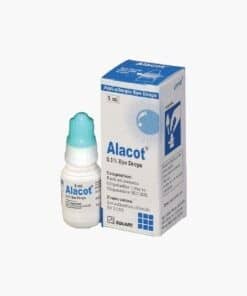
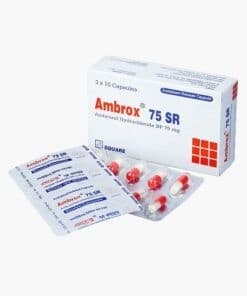
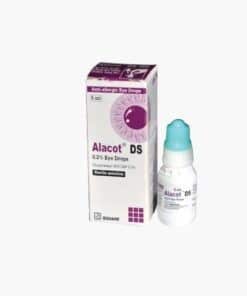

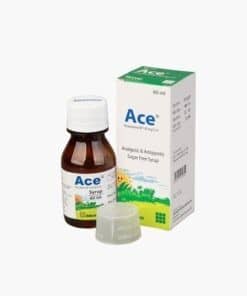
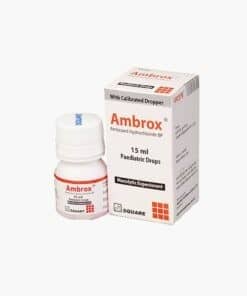
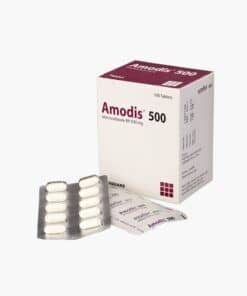

Reviews
There are no reviews yet.